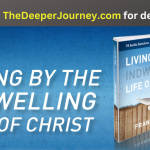For many years I taught a course on Sects, Cults and New Religious Movements.
Scholars produce many reasons why new religions should attract particular groups, and offer similar messages, eg the promise of healing. Often these reasons are drawn from psychology or sociology. But the groups themselves explain their message and their appeal according to particular religious narratives, and similar patterns and ideas surface in such narratives in strikingly different religious traditions, and across historical epochs. The same kinds of movement and rhetoric manifest in Christianity in very different eras, but also in Islam (say) or Judaism, although there is little evidence of direct contact or influence. That suggests that we are dealing with recurrent themes built into religions of their nature, deep in their DNA.
I often found myself discussing the fundamental theme of Restoration. Now obviously, Restorationism or Christian Primitivism is a critical theme in nineteenth century Protestantism, and the idea can be traced long before that. But I am speaking of the idea, and its consequences, in a much broader context, one that appears in different forms in multiple faiths.
For present purposes, I’ll look at this chiefly through the lens of Christianity and post-Christian groups. I stress again that I am not using the Restorationist model that American historians are accustomed to. Restorationist movements themselves certainly would not acknowledge many of these aspects. Mormons, I suppose, would provide the best fit, but by no means the only one. In the seventeenth and eighteenth centuries, Judaism produces quite a few independent parallels.
What follows is an ideal statement, a general model, and not every group fills every criterion.
The underlying idea: The Bible holds out promises of a glorious world under God’s rule, although that picture differs radically from any kind of present reality. Something has gone terribly wrong, and almost certainly the existing churches and faiths are to blame. However, God has not abandoned the world, and offers the means to set it right. He promises a restoration of the primitive faith and its scriptures. This might take many forms, which include:
1. A new prophetic dispensation. God selects a particular individual to proclaim the restored gospel to the world. Inspiration is now widely available, especially to those excluded by the present religious order. Prophets and apostles wander the earth once more.
2. Prophets and teachers are likely to be drawn from those groups despised by the old order – from the young, the uneducated, but especially ands above all, from women. The old world is turned upside down.
3. In the new age, the lines dividing this world and the next become thin, as prophets have access to divine wisdom through heavenly messengers or angels.
4. A restored gospel, a new scripture, might teach the new faith. In these special times, the canon of scripture is no longer closed, but is open to inspired teaching. These scriptures might be new, or they might be lost ancient scriptures now rediscovered and properly interpreted for the first time. Perhaps the established churches have concealed or distorted these scriptures up to the present time.
5. This new age is a prelude to the end of the worldly era, and marks the end of times. It precedes the end of the world as we have known it, and the destruction of old social and religious structures. We might be living before the end of times, or perhaps those times have already ended, and only God’ chosen ones recognize the fact.
6. The world of the scriptures is restored. In the new world coming into being, life as portrayed in the original scriptures once again becomes possible. People will use the Bible as a literal guide for living, even if these standards violate the accepted codes of society. The more mainstream churches and society condemn the new way of life, the more proof believers have that theirs is the correct path. Persecution is a warrant of faith.
7. The quest for perfection. Heaven is once again available on earth. Perhaps this just applies to believers, who accept perfection, and must flee from a sinful world; or perhaps believers have a duty to lead the wider world into that new godly order.
8. All is transformed in the new world order. The transformation particularly affects personal and social relationships. With the end of old ideas of property and individualism, believers come together into communal settlements, to share in a common pursuit of perfection.
9. The emerging society must abandon any traditional distinctions and prejudices that prevent achieving social and human equality, crossing lines of race and gender.
10. The new order teaches a new sexual ethic, new attitudes to sexual purity and liberation. This might mean abstaining from sex, or new forms of marriage and family structure – polygamy, selective breeding, free love… New attitudes to gender also affect theology, and might mean a more feminine or androgynous view of God.
11. The quest for perfection extends into every aspect of daily life. It demands new attitudes to the body and its improvement, new attitudes to food and drink. This often means encouraging or promoting special foods while forbidding others that are felt to be harmful or sinful. These dietary rules help create a sense of common belonging among members of the movement, and set them apart from the rest of society.
12. Central to the new age is the promise of healing in mind and body. This follows the promises offered in the scriptures, which are once again fully available to believers.
13. In the restored world, the end times, believes have access to a full and proper understanding of the laws of nature, which often means accepting ideas rejected by mainstream science. These ideas might affect notions of healing, the powers of the mind, or various supernatural manifestations. Believers are now granted special powers and abilities not previously available, and still not available to non-believers.
14. Beyond restoring the world of the Bible, believers now have access to the ancient wisdom and powers of other great civilizations, the wisdom of Babylon and Egypt. They share a common revelation that actually predates the Christian era.
As I say, this is an ideal model. It’s important to understand because, in different forms, it underlies a great many New and Emerging Religious Movements around the world, and throughout history.
















